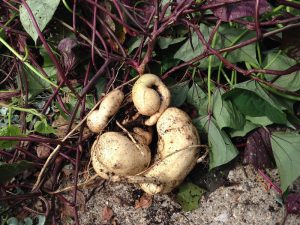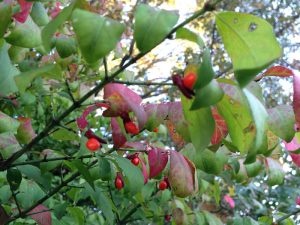Q. I grew beautiful sweet potato vines in my flower garden this year. They looked great all summer, though they grew quite a bit larger than I expected so I had to cut them back to keep them from growing over my other plants. When I was cleaning up the garden last week, I noticed that the sweet potatoes had some fairly large potatoes underground. Are these safe to eat and do they taste like the sweet potatoes that I buy at the grocery? Am thinking about saving these for Thanksgiving dinner.
A. Ornamental sweet potatoes are quite popular as trailing plants for containers and as annual ground cover in the landscape. Breeders select ornamental cultivars based on attractive foliage and not for edible quality. So while the tuberous roots of the ornamental cultivars are edible, their flavor and texture are not likely to be of the same quality as those selected for eating. Also, note whether those grown as ornamentals have been treated with pesticides that would not be labeled for use on edible sweet potatoes, though this is typically not a problem in the home garden.
Q. I heard recently that burning bush is considered invasive and should not be planted. I’ve always loved their beautiful fall color. What makes them so invasive and is there anything that I can plant instead that would have that gorgeous red color?
A. The common burning bush is native to Asia and has been widely planted – in particular for that flaming red fall color. It is also easy to propagate and a relatively fast grower. Although not really all that noticeable, it does produce red fruits that either fall off the plant and sprout numerous new plants in place, or birds will eat the fruit and then distribute it to unwanted areas. As for fall color, it is really hard to match that brilliant red, but some good small to medium shrub alternatives include spicebush, fothergilla, winterberry, Virginia sweetspire, chokeberry, and viburnum. Many of these have good to great fall color or have attractive fruit late in the season.

